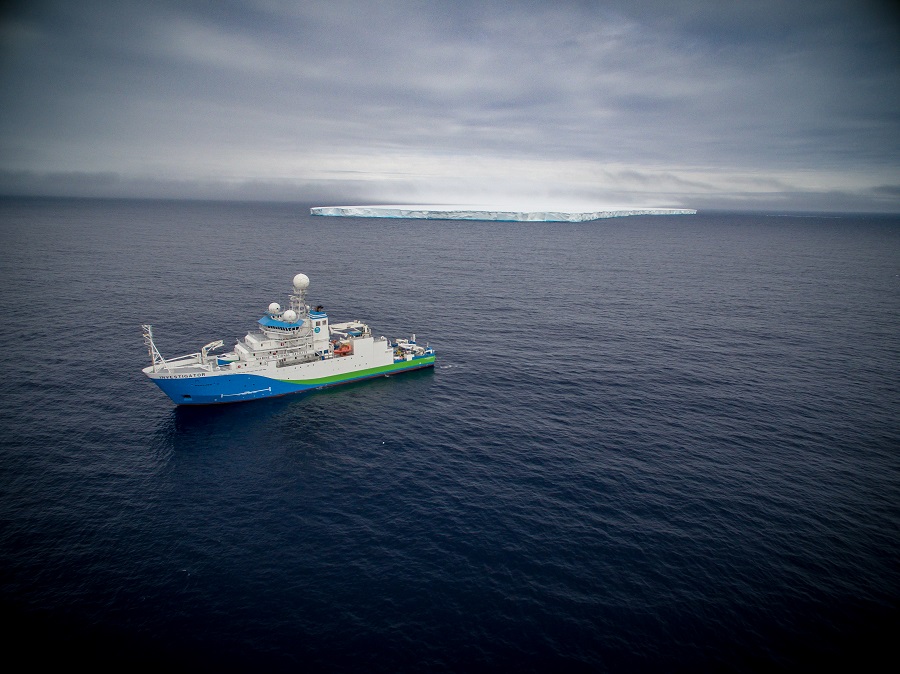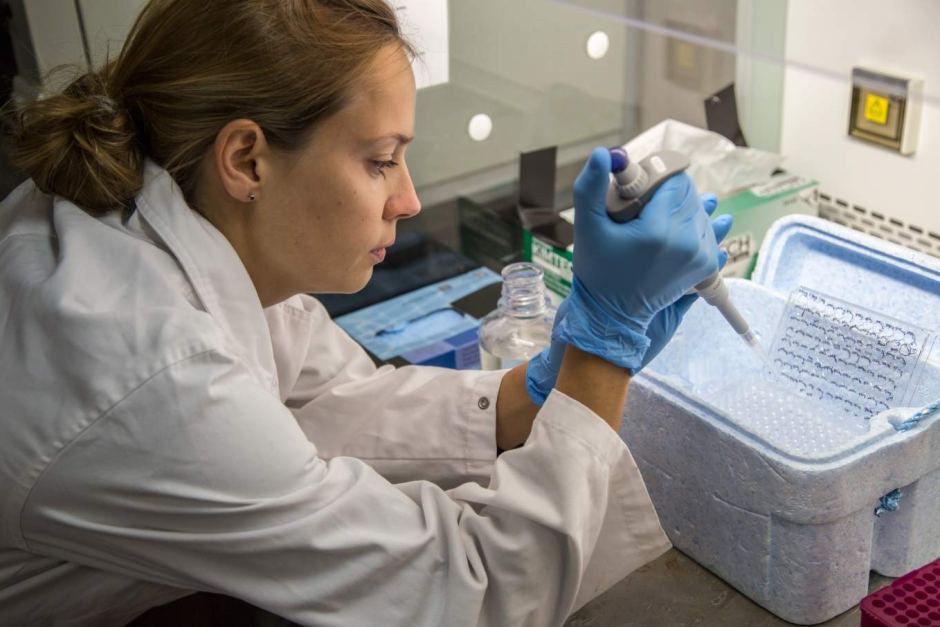
Drone photograph above Investigator research vessel in Antarctica.
During Investigator’s voyage to Antarctica, researchers on board are on the hunt for ancient phytoplankton to study their DNA. Image – Marine National Facility
Did you know that every second breath we take is made possible by phytoplankton?
Phytoplankton is a type of algae that grows in the ocean. Similar to trees, its cells contain chlorophyll which use carbon dioxide as fuel, emitting oxygen into the atmosphere as a very useful by-product.
In fact, phytoplankton are much more efficient at pumping oxygen into the atmosphere than trees. If you were to pile up all of the trees and shrubbery in the world, put them on one side of a scale balance, and then scooped up all the phytoplankton in the ocean and popped them on the other side, phytoplankton would weigh less than 1% of the total weight of all the greenery (also known as photosynthetic biomass). Despite this, about half the oxygen in the atmosphere comes from these marine microalgae.
So it stands to reason that phytoplankton are our friends, but with our oceans warming and increasing in acidification, we need to understand how these powerhouse organisms might be affected.
New research on board our research vessel Investigator is looking at the DNA of ancient phytoplankton preserved in Antarctic sediments, to understand how they’ve been impacted by changing climates over the past 30,000 years. To do this, scientists lower corers from the ship to the seafloor thousands of metres below and punch tubes into the sediment to capture samples that contain the phytoplankton DNA. The sea floor sediments are brought back on board, allowing scientists to peer into ancient history, when the world was a very different place.
Leading this research on board Investigator is Dr Linda Armbrecht from Macquarie University.
“Antarctica is a good place to take samples because the sea floor sediments, where the phytoplankton DNA is extracted, are freezing cold, preserving the DNA for as long as 30,000 years,” said Linda.
“Different phytoplankton species take up different amounts of carbon dioxide and produce different amounts of oxygen, so knowing how these organisms have behaved in the past, will help us predict how they will behave in the future as our climate continues to change.
“Phytoplankton are not only amazing oxygen producers, but they play an essential role at the base of the food web, providing energy for fish and other animals, which are then eaten by bigger fish and then larger fish, which eventually end up on our dinner plates.”
Linda is part of a team of 22 scientists currently at sea on Investigator, which is being led by Associate Professor Leanne Armand, also from Macquarie University. This is Investigator’s first Antarctic-specific science mission, and one of it’s longest voyages at 51 days!

Dr Linda Armbrecht conducting research on board Investigator.
“The overall goal of the voyage is to understand if the changes currently being seen in East Antarctica have happened before,” said Leanne.
“The world is looking closely at East Antarctica because it’s melting at a fairly rapid rate. If it was to all melt tomorrow, we would be looking at seas around 6-7 metres higher than they are now.
“What we want to know is: has this ever happened before? To answer this question we’re taking deep samples of the Sabrina Seafloor (located just off the coast of East Antarctica) to take us back in time by as much as a couple of hundred thousand years, when the world was a very different place.
“Understanding how Antarctica has behaved during different ‘ice ages’ and melting stages, will help us piece together what the future holds for the continent and even the world.”


17th February 2017 at 3:12 pm
Interesting work thank you. Would the ancient DNA be viable for gene splicing in living phytoplankton?
3rd February 2017 at 7:29 pm
totally amazing keep up the good work I am a chef can I work on the Investigator